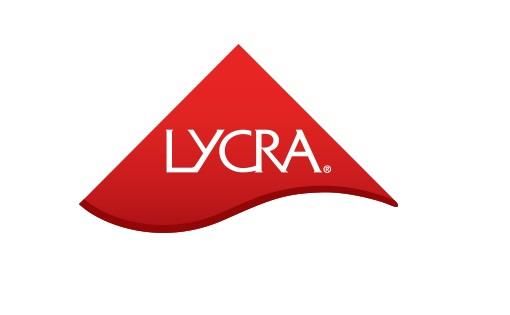The LYCRA Company’s Business Development Director-South Asia Rishi Suri discusses new markets, business development strategies and key areas for expansion and development.

In the context of global supply chains, what are the key challenges and solutions for maintaining fibre quality and performance?
Given our involvement in the spandex industry, our response is framed within this specific context. The biggest challenge is related to the behaviour of the fibres during spinning, knitting/weaving, and wet processing (dyeing and finishing). If a spinner is using fibres from different elastane manufacturers, it could lead to variations in yarn and fabric performance, especially with large bulk volumes in the same fabrics and colours.
In contrast to The LYCRA Company, the majority of other elastane manufacturers lack a global manufacturing presence. The LYCRA Company maintains a uniform process across its various manufacturing facilities worldwide, resulting in improved consistency and performance of yarns and fabrics. We guarantee that when a brand sources fabrics and garments with LYCRA® fibre from mills in diverse regions, the specific type of LYCRA® fibre is distributed to different mills to prevent discrepancies in consistency and performance.
Can you discuss the role of consumer awareness in driving innovation and sustainability within the fibre and apparel industries?
Consumer awareness plays a pivotal role in driving innovation, often stemming from unmet consumer needs. While consumers may have a general idea of what they desire from a particular apparel category, they may not articulate their exact requirements. It is our task to breathe life into these unmet needs through innovation. For instance, research revealed that women desired jeans that could double as shapewear without sacrificing comfort, and this resulted in the development of a new technology for denim.
Furthermore, when a leading apparel brand introduces a groundbreaking garment previously unseen by consumers, it ignites a sense of awe. This sparks awareness through channels like social media and word of mouth, prompting other brands to follow suit and introduce similar products tailored to consumers’ needs in various regions.
How do you see the future of smart textiles evolving, and what impact will it have on the fibre and apparel industries?
Smart textiles, though still in their infancy, are increasingly gaining significance. While we have yet to witness a technologically disruptive apparel item produced on a large scale, this is bound to change. The success of smart textiles hinges largely on their ability to address genuine needs and how technology integrates with apparel and textiles to innovate and meet those needs. Examples such as Wearable X Yoga pants, which utilise haptic feedback to assist users in yoga poses, or Hexoskin tops, which monitor physiological health and fitness in real-time, illustrate this.

One of our recent innovations, LYCRA® FitSense™ technology (Liquid LYCRA®), offers a localised modulus boost, showcasing the potential of smart textiles to enhance garment performance.
Smart textiles could result in entirely new raw materials, potentially reshaping the entire value chain, from yarn production to garment manufacturing processes. Currently, smart apparel tends to be expensive and would require significant scale to achieve more accessible pricing.
Critical to the success of smart textiles is the collaboration between different technological disciplines responsible for developing wearable technology and the textile industry. This collaboration is vital for identifying bottlenecks and devising pathways to reach consumers effectively.
How does The LYCRA Company identify and prioritise new markets for business development on a global scale?
The LYCRA Company has extensive experience spanning several decades which provides us with a competitive advantage in identifying emerging markets. Working across the entire apparel value chain affords us insights into two distinct market categories. Firstly, there are the production markets, such as China, ASEAN, South Asia, Turkiye, and Central America, where we directly sell our products and where our upstream commercial teams concentrate their efforts. Concurrently, we collaborate closely with brands and retailers, primarily situated in Western markets like the US, Europe, and Japan, who integrate our fibres and technologies into their garments. These consumption markets play a pivotal role in driving demand for our products. Additionally, domestic markets like China, Brazil, and India have gained significant growth in recent years, with our downstream commercial teams in these regions spearheading business development initiatives.
Another crucial factor in market prioritisation, particularly within production markets, revolves around segment-specific innovation. For instance, innovations tailored for denim have significant traction and sales in regions such as China, India, Bangladesh, Pakistan, Turkiye, Brazil, and Central America. Conversely, innovations targeted at Warp Knits are concentrated in specific areas of Europe and China.
How do technological advancements shape The LYCRA Company and its global business in development strategies?
The LYCRA Company’s growth over the years has been attributed to technological advancement. We have spearheaded numerous innovations aimed at enhancing the consumer experience across various garment categories, leveraging the capabilities of LYCRA® fibre, COOLMAX®, and THERMOLITE®. Our innovations have left a mark in diverse segments including sportswear, activewear, athleisure, shapewear, bras, underwear, socks, denims, and trousers.
Leading global brands have embraced our fibres, incorporating them into their product lines, resulting in bestsellers that resonate with consumers worldwide. Examples include SPANX’s shapewear, Lululemon’s yoga pants, Victoria’s Secret’s invisible bra lift, H&M’s performance T-shirts, and Marks and Spencer’s lightweight chinos. The success of these products creates a halo effect, inspiring other brands to follow suit and integrate our fibres into their offerings.

In what ways does The LYCRA Company collaborate with global brands to drive the adoption of sustainable fibre solutions?
Initially, we identify brands that have specific sustainability goals and are actively seeking to convert their collections to sustainable fibres. Our collaboration with these brands starts with the introduction of our PLANET AGENDA, followed by our portfolio of sustainable fibres.
Subsequently, we work jointly to curate fabrics incorporating these sustainable fibres, leveraging the expertise of our partner mills. Finally, we collaborate with these brands to develop promotional campaigns that spotlight the sustainable ingredients such as LYCRA® EcoMade, COOLMAX® EcoMade, and THERMOLITE® EcoMade.
Looking forward, what emerging markets or sectors does The LYCRA Company see as key areas for expansion and development?
The emerging market/segment of workwear holds significant importance for us. We believe that we provide excellent solutions for workwear fabrics, particularly with our T400® Fibre, which offers stretch, moisture management, and durability to garments.
Presently, we are actively collaborating with mills and several workwear garment brands in the US and Europe to expand our presence in this sector. The introduction of home textiles represents another promising upcoming segment for us.








Comments